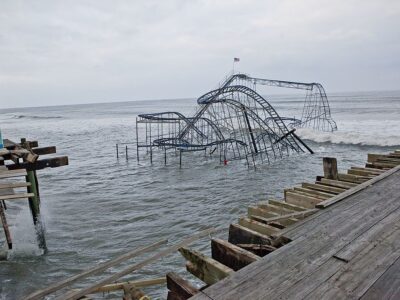disaster response
-

Climate School Experts on the Los Angeles Fires: Causes, Impacts and Recovery
As California battles devastating wildfires, our researchers are helping to make sense of how they became so destructive, and what’s needed for recovery.
-

Twelve Years After Sandy, Have We Gotten Better at Preparing for Disaster?
Jeffrey Schlegelmilch, the director of Columbia’s National Center for Disaster Preparedness, reflects on applying lessons from Hurricane Sandy to more recent disasters.
-

New York City’s Resilience and Post-COVID Recovery
New York City has its problems, but the energy, work ethic, brainpower, and sheer determination of the people who live here always ensure its revival.
-

State Legislatures Continue to Enact Disaster Policies in 2023
States have already filed at least 103 bills related to disaster resilience. Columbia Climate School’s National Center for Disaster Preparedness reports on what has been achieved so far.
-

Flooding in California: What Went Wrong, and What Comes Next
Climate School experts help to explain this devastating weather and what it means in the broader conversation of climate change and disaster response.
-

New Climate School Report Details State Policy Trends in Disaster Resilience
As disasters become more expensive, state-level recovery measures are increasing in importance. A new report sheds light on state efforts to prioritize disaster resilience and recovery.
-

Climate-Fueled Extreme Weather: Protection, Recovery, and Reconstruction
When a weather disaster happens every hundred years, it is an emergency. When it happens every year, it is a routine, periodic occurrence from which we need to protect ourselves.
-

Disaster Expert Testifies in Congress Regarding Future Pandemics
Columbia Climate School’s Jeffrey Schlegelmilch spoke to members of Congress about how better preparedness before disasters strike can save money and lives.
-

Disaster Relief and the Psychology of ‘Once in a Lifetime’ Events
It’s time to stop responding to frequent climate catastrophes and start preparing for them.
